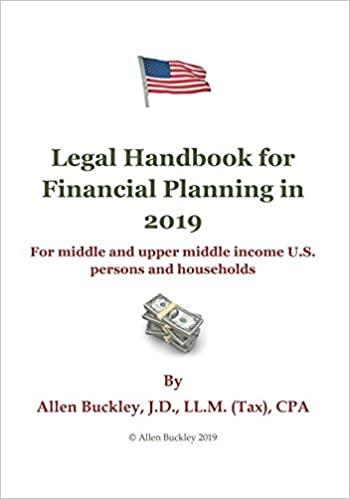Question
Please fill in the blanks Drop down options for fill in blanks: 1. Checking account, debit card, OR student loan 2. between 500 and 1000
Please fill in the blanks
Drop down options for fill in blanks:
1. Checking account, debit card, OR student loan
2. between 500 and 1000 OR without any dollar limitation
3. only for emergencies OR whenever its convenient
4. living beyond your means OR managing your cash wisely
5. when you decide to write a check for them OR based on a regular disbursement schedule
6. requires OR doesn't require
7. for $25,000 or more OR with no dollar limitation
8. once a month, once a year, OR when you have spare money
9. size of your home OR equity in your home
10. less OR more
11. decrease OR increase
12. do OR do not
13. secured with an additional mortgage on your house OR unsecured
There are no drop down options for the fill in the blank dollar amounts

Step by Step Solution
There are 3 Steps involved in it
Step: 1

Get Instant Access to Expert-Tailored Solutions
See step-by-step solutions with expert insights and AI powered tools for academic success
Step: 2

Step: 3

Ace Your Homework with AI
Get the answers you need in no time with our AI-driven, step-by-step assistance
Get Started


